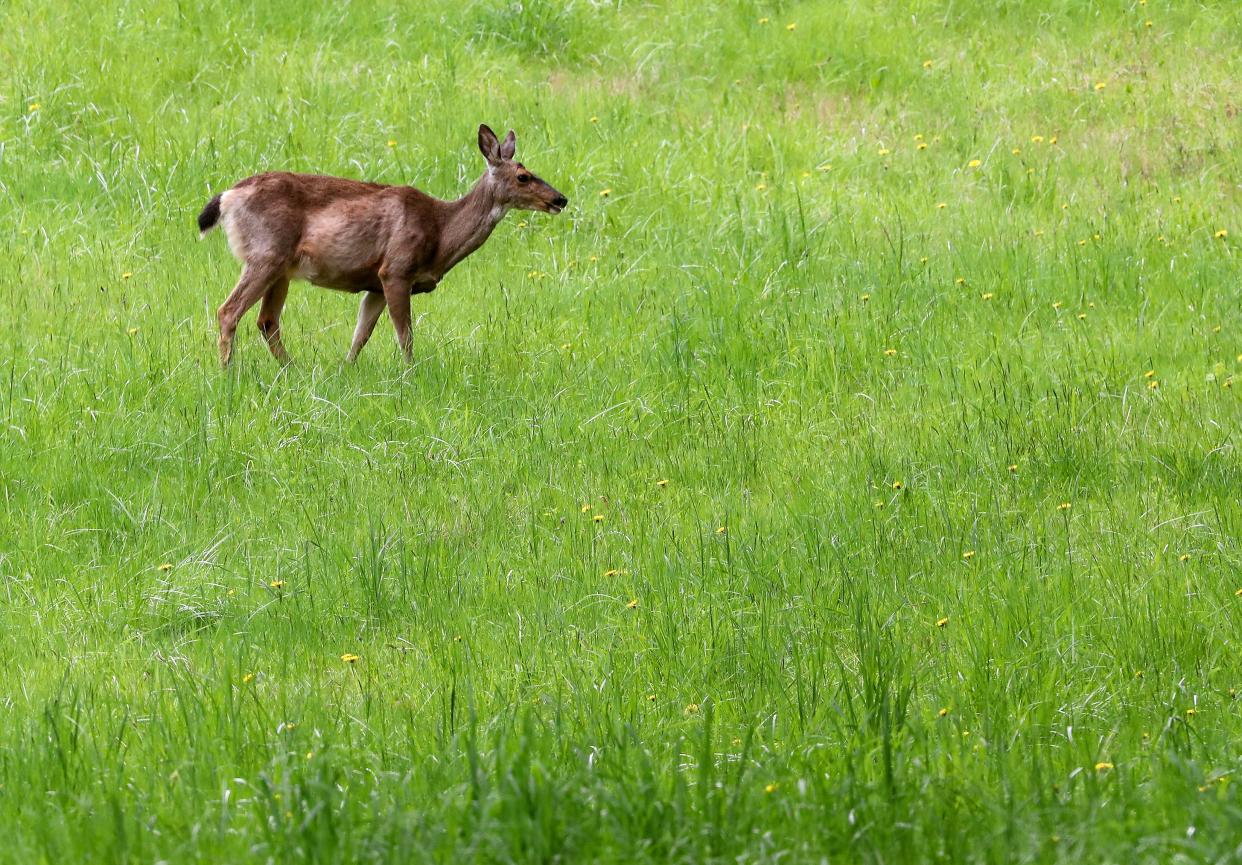What to do so you (and your garden) can cohabitate with deer this spring

By mid-spring, the garden is bursting with lush, tender new leaves and flowers. Naturally enough, the deer are enjoying them thoroughly. From a deer's perspective, humans kindly create salad bars of luscious greenery. It's hard to blame deer for taking advantage of our generosity. After all, when we replace traditional deer habitat with sweeps of bulbs and perennials, rose bushes, fruit trees, and other delectable treats, only a truly stupid deer wouldn't at least try to sample the goodies. Happily, there are a number of good ways for people and deer to cohabitate.
For starters, fences and hedges can direct deer traffic away from your property. Dense evergreen shrubs can be helpful but hedges don’t grow up overnight. Fences work right away as long as they’re high enough. In wooded areas, that’s 6-7 feet above flat ground; on sloping ground, the uphill side should be a bit higher. Where deer can get a running start, garden fences need to be around 8 feet high. Wooden fencing is handsome but expensive, while wire is a bit less (around $300 for a roll of heavy duty 8 x 100 foot wire fencing). Heavy duty plastic mesh fencing is a better deal, at around $400 for 8 x 330 feet, and you still need to put in posts every 8 feet for whichever material you choose.
If fencing is not in the picture, consider a dog. Young, active dogs can help keep deer at bay (as long as the dogs are outside, of course). Any male predator urine will also do the trick and many of us keep a fellow around the house. Ask them to whizz around the garden and the deer will take off!
Since deer are happy to lunch on a remarkable array of shrubs, it’s important to pick plants that won’t become snacks. Other than yews and Doug firs, most conifers (fir, incense cedar, deodar cedar, false cypress, cypress, juniper, spruce, pine, western red cedar, and hemlock) are not deer fodder, though most get too big for small properties. Pacific Wax Myrtle (Myrica californica) is a tough, fast growing, densely branched shrub that can be sheared or left natural. Its height varies with soil and moisture conditions, averaging 10-15 feet in clay soils, taller with supplemental watering. Once established it’s drought tolerant and makes excellent bird habitat.
There are many deer repellents on the market, most either sprays or powders intended to make foliage unpalatable to deer and other nibblers. In my experience, any will be effective for a while, so alternating them is a good strategy. Bobbex deer repellent spray lasts several months and is harmless to people and wildlife, including pets, birds and aquatic life. I’ve had excellent results from a mechanical device called a Scarecrow. This gizmo combines a motion detector with a ratcheting sprayer that makes quite a lot of noise. The battery powered device is attached to a long hose end, so you can move it around.
Moving the Scarecrow is vital to its success. When left in one place for even a few days, deer become accustomed to it and simply bypass its circle of action. When moved every day or so, it remains effective all season. To get the most protection from a Scarecrow, place it at or near the point where deer enter your property. Deer tend to stick to regular pathways, but if you block one off, their new pathway is often quite a distance away. Thus, when your deer problems are resolved, your neighbors will be writing to me soon....
Contact Ann Lovejoy at 413 Madrona Way NE, Bainbridge Island, WA 98110 or visit Ann’s blog at http://www.loghouseplants.com/blogs/greengardening/ and leave a question/comment.
This article originally appeared on Kitsap Sun: What to do about the deer coming into your garden

